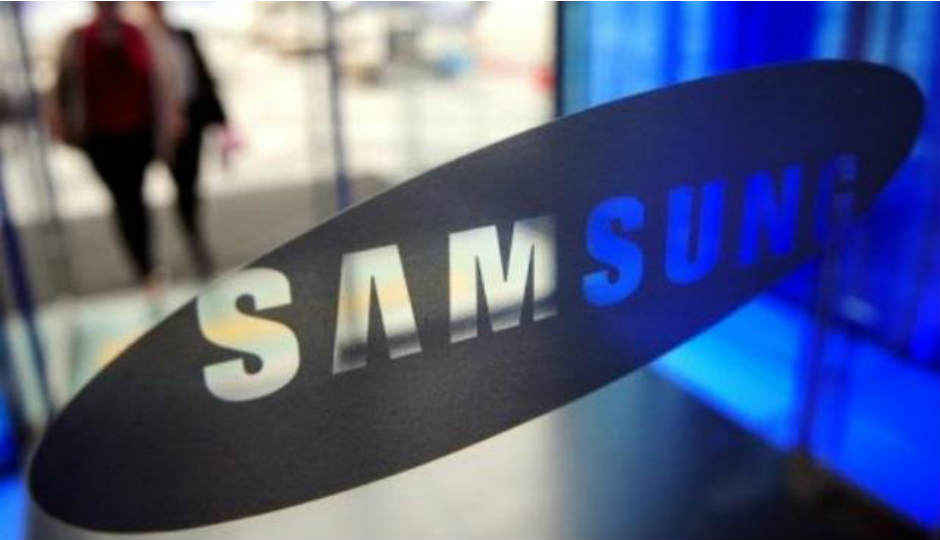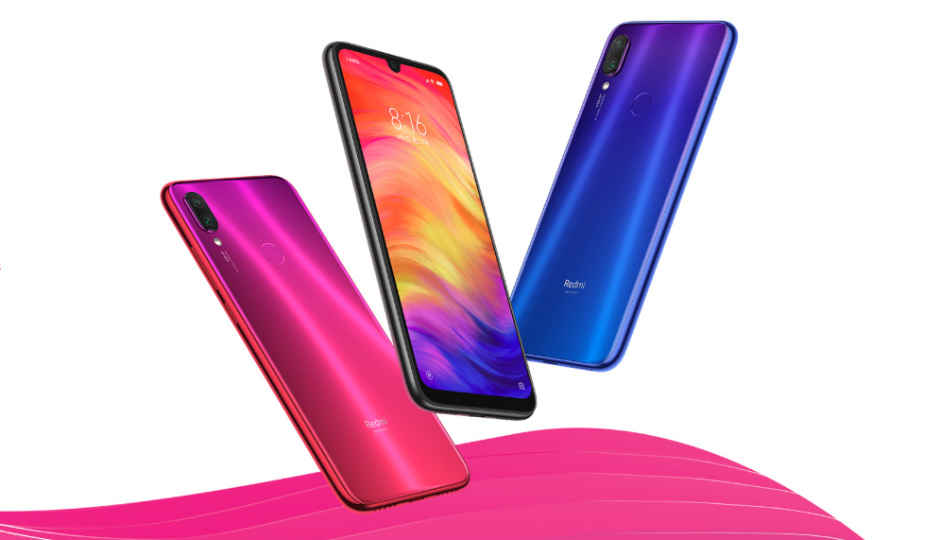 Highlights: Google deletes 29 malicious beauty camera apps from Play Store. These apps used to serve users pornographic content and collect their data. A large number of downloads were seen in Asia, especially in India. Google has removed 29 ‘Beauty Camera’ apps that used to collect the data, especially pictures, of the users who them installed on their phones. While some of these apps used to send pornographic content to users, others redirected them to phishing websites. Japanese IT security company Trend Micro says that some of these apps have millions of downloads, and a large number of the downloads originated from Asia - particularly India. “We discovered several beauty camera apps (detected as AndroidOS_BadCamera.HRX) on Google Play that are capable of accessing remote ad configuration servers that can be used for malicious purposes. A user downloading one of these apps will not immediately suspect that there is anything amiss, until they decide to delete the app,” Trend Micro said in a blogpost. The top three apps: Pro Camera Beauty, Cartoon Art Photo, and Emoji Camera, each got over a million downloads. For example, package com.beauty.camera.project.cloud created a shortcut after being launched. However, it used to hide its icon from the application list, making it more difficult for users to uninstall the app since it was not available for a drag and delete it. Furthermore, the camera apps were found to be using packers to prevent them from being analysed. Trend Micro has also shared a code snippet to show how the malicious app hid itself from the applications list. A number of these apps were also found to be pushing several full screen ads when users unlocked their devices, including malicious ads (such as fraudulent content and pornography) that will pop up via the user’s browser. “During our analysis, we found a paid online pornography player (detected as AndroidOS_PornPlayer.UHRXA) that was downloaded when clicking the pop up,” Trend Micro claimed. Since these malicious apps looked as legitimate as possible, users found it difficult to determine where the malicious content was coming from. Some of these apps redirect to phishing websites that ask for personal information such as addresses and phone numbers. Some of the apps seemingly allowed users to “beautify” their pictures by uploading them to the designated server. Trend Micro found that when a user uploads an image into edit in the app, instead of getting a final result with the edited photo, the user gets a picture with a fake update prompt in nine different languages. The authors can collect these photos uploaded in the app, and possibly use them for malicious purposes — for example as fake profile pictures on social media. Reportedly, these ‘beautify’ apps can also hide themselves like the ones mentioned above. Related Read: Quick Heal claims to discover fake apps on Google Play Store Google removes massive trove of malware apps and shoddy reviews from Play Store
Highlights: Google deletes 29 malicious beauty camera apps from Play Store. These apps used to serve users pornographic content and collect their data. A large number of downloads were seen in Asia, especially in India. Google has removed 29 ‘Beauty Camera’ apps that used to collect the data, especially pictures, of the users who them installed on their phones. While some of these apps used to send pornographic content to users, others redirected them to phishing websites. Japanese IT security company Trend Micro says that some of these apps have millions of downloads, and a large number of the downloads originated from Asia - particularly India. “We discovered several beauty camera apps (detected as AndroidOS_BadCamera.HRX) on Google Play that are capable of accessing remote ad configuration servers that can be used for malicious purposes. A user downloading one of these apps will not immediately suspect that there is anything amiss, until they decide to delete the app,” Trend Micro said in a blogpost. The top three apps: Pro Camera Beauty, Cartoon Art Photo, and Emoji Camera, each got over a million downloads. For example, package com.beauty.camera.project.cloud created a shortcut after being launched. However, it used to hide its icon from the application list, making it more difficult for users to uninstall the app since it was not available for a drag and delete it. Furthermore, the camera apps were found to be using packers to prevent them from being analysed. Trend Micro has also shared a code snippet to show how the malicious app hid itself from the applications list. A number of these apps were also found to be pushing several full screen ads when users unlocked their devices, including malicious ads (such as fraudulent content and pornography) that will pop up via the user’s browser. “During our analysis, we found a paid online pornography player (detected as AndroidOS_PornPlayer.UHRXA) that was downloaded when clicking the pop up,” Trend Micro claimed. Since these malicious apps looked as legitimate as possible, users found it difficult to determine where the malicious content was coming from. Some of these apps redirect to phishing websites that ask for personal information such as addresses and phone numbers. Some of the apps seemingly allowed users to “beautify” their pictures by uploading them to the designated server. Trend Micro found that when a user uploads an image into edit in the app, instead of getting a final result with the edited photo, the user gets a picture with a fake update prompt in nine different languages. The authors can collect these photos uploaded in the app, and possibly use them for malicious purposes — for example as fake profile pictures on social media. Reportedly, these ‘beautify’ apps can also hide themselves like the ones mentioned above. Related Read: Quick Heal claims to discover fake apps on Google Play Store Google removes massive trove of malware apps and shoddy reviews from Play Storefrom Latest Technology News http://bit.ly/2Sq1lDv
 Samsung is reportedly working on a successor to its Galaxy A9 smartphone, which was launched not too long ago with a quad camera setup at the back. While the Galaxy A9 did not feature a notch or Samsung’s newest Infinity-O display with punch hole cameras, a new leak suggests that its successor, the Galaxy A90 might go the pop-up camera route. According to a tweet by famous tipster Ice Universe, the Galaxy A90 will feature a pop-up selfie camera. If this is true, the Galaxy A90 will be Samsung’s first phone with a pop-up camera mechanism. The tipster claims that the Galaxy A90’s screen will be “perfect”, which means full screen real estate, with no interruptions from a notch or a hole in the display. Why do I say that the A90 is perfect? The answer is that the Galaxy A90 will be Samsung's first pop-up front camera phone, so its screen is perfect, there is no Notch, no Hole. pic.twitter.com/j01WWtPzh8 — Ice universe (@UniverseIce) February 2, 2019 Not much else is known about the rumoured Galaxy A90 and even this leak is super early as the phone is only expected to launch by the end of the year. Given that Samsung’s A series has played on camera innovation in the past, chances of phones in the series featuring pop-up cameras (automatic or manual sliding) are high. However, given the early nature of this rumour, things could very well be different.
Samsung is reportedly working on a successor to its Galaxy A9 smartphone, which was launched not too long ago with a quad camera setup at the back. While the Galaxy A9 did not feature a notch or Samsung’s newest Infinity-O display with punch hole cameras, a new leak suggests that its successor, the Galaxy A90 might go the pop-up camera route. According to a tweet by famous tipster Ice Universe, the Galaxy A90 will feature a pop-up selfie camera. If this is true, the Galaxy A90 will be Samsung’s first phone with a pop-up camera mechanism. The tipster claims that the Galaxy A90’s screen will be “perfect”, which means full screen real estate, with no interruptions from a notch or a hole in the display. Why do I say that the A90 is perfect? The answer is that the Galaxy A90 will be Samsung's first pop-up front camera phone, so its screen is perfect, there is no Notch, no Hole. pic.twitter.com/j01WWtPzh8 — Ice universe (@UniverseIce) February 2, 2019 Not much else is known about the rumoured Galaxy A90 and even this leak is super early as the phone is only expected to launch by the end of the year. Given that Samsung’s A series has played on camera innovation in the past, chances of phones in the series featuring pop-up cameras (automatic or manual sliding) are high. However, given the early nature of this rumour, things could very well be different. Redmi seems to be going the Poco way for its first year as an independent brand. Just like Xiaomi’s sub-brand Poco launched a flagship Snapdragon 845-powered smartphone last year, its newest subsidiary Redmi is planning to launch a flagship device running on Snapdragon 855 this year, possibly in . another attempt to disrupt the market. According to a post on Weibo (Via GSMArena) made by Redmi’s General Manager Lu Weibing, the company is in talks to step out of the mid-range zone and enter flagship territory with a smartphone that runs on the Snapdragon 855 chipset. Weibing reportedly revealed the information in a post with an image of himself and the Redmi crew in discussion at the Xioami's Shenzhen R&D Institute. Nothing else about the flagship Redmi phone was shared in the post. Redmi is currently a few days shy of launching the Redmi Note 7 in India, with expectations also pointing to the launch of the Redmi Note 7 Pro and the Redmi Go. The Redmi Note 7 is expected to be the most affordable smartphone with a 48MP camera setup when it launches in India. Last time Redmi teased the launch of the Note 7 in India, it took a swing at Samsung’s newly launched Galaxy M series smartphones. It is expected that Xiaomi and Redmi could launch the Redmi Note 7 in India on February 14. Xiaomi could also unveil the Redmi Note 7 Pro alongside the Redmi Note 7 in India. If that is the case, the Feb 14 Valentine’s Day launch could be possible since Xiaomi launched the Redmi Note 5 Pro in India on the same date last year.
Redmi seems to be going the Poco way for its first year as an independent brand. Just like Xiaomi’s sub-brand Poco launched a flagship Snapdragon 845-powered smartphone last year, its newest subsidiary Redmi is planning to launch a flagship device running on Snapdragon 855 this year, possibly in . another attempt to disrupt the market. According to a post on Weibo (Via GSMArena) made by Redmi’s General Manager Lu Weibing, the company is in talks to step out of the mid-range zone and enter flagship territory with a smartphone that runs on the Snapdragon 855 chipset. Weibing reportedly revealed the information in a post with an image of himself and the Redmi crew in discussion at the Xioami's Shenzhen R&D Institute. Nothing else about the flagship Redmi phone was shared in the post. Redmi is currently a few days shy of launching the Redmi Note 7 in India, with expectations also pointing to the launch of the Redmi Note 7 Pro and the Redmi Go. The Redmi Note 7 is expected to be the most affordable smartphone with a 48MP camera setup when it launches in India. Last time Redmi teased the launch of the Note 7 in India, it took a swing at Samsung’s newly launched Galaxy M series smartphones. It is expected that Xiaomi and Redmi could launch the Redmi Note 7 in India on February 14. Xiaomi could also unveil the Redmi Note 7 Pro alongside the Redmi Note 7 in India. If that is the case, the Feb 14 Valentine’s Day launch could be possible since Xiaomi launched the Redmi Note 5 Pro in India on the same date last year. Highlights: IDC dubs 2018 as worst year for smartphone shipments globally. Chinese players saw positive growth despite decline. Samsung led the overall market, followed by Apple and Huawei. The year 2018 was the worst year ever for smartphone shipments globally as smartphone vendors shipped a total of 1.4 billion units in the full year, which is down 4.9 percent year-over-year (YoY), International Data Corporation (IDC) said in its Worldwide Quarterly Mobile Phone Tracker. The market research firm also said that in the fourth quarter of 2018, 375.4 million units were shipped, which is down 4.9 percent year-over-year (YoY). The holiday quarter closed out the worst year ever for smartphone shipments, and with challenging market conditions continuing into the first quarter of 2019, the likelihood of a declining market this year becomes more of a reality, the market research firm claimed. Ryan Reith, Program Vice President with IDC's Worldwide Mobile Device Trackers, says that “globally the smartphone market is a mess right now.” “Outside of a handful of high-growth markets like India, Indonesia, Korea, and Vietnam, we did not see a lot of positive activity in 2018. We believe several factors are at play here, including lengthening replacement cycles, increasing penetration levels in many large markets, political and economic uncertainty, and growing consumer frustration around continuously rising price points,” Reith said in a statement. IDC says that China, which accounts for roughly 30 percent of the world's smartphone consumption, had an even worse 2018 than the previous year with volumes down just over 10 percent. Surprisingly, at the same time the top four brands - all of which are Chinese (Huawei, Oppo, Vivo, and Xiaomi) grew their share of the China market to roughly 78 percent, up from 66 percent in 2017. On a global level, the top five smartphone companies continue to get stronger and now account for 69 percent of smartphone volume - up from 63 percent a year ago. The market research firm says that if we include Vivo, which is currently number six in this list and has been in and out of the top 5 in recent quarters, the share of the top companies is 75 percent and growing. Anthony Scarsella, Research Manager with IDC, says that with replacement rates continuing to slow across numerous markets, vendors will need to find a new equilibrium that balances the latest smartphone features, compelling design, and affordability. “The arrival of both 5G and foldable devices later this year could bring new life to the industry depending on how vendors and carriers market the real-life benefits of these technologies. However, we expect these new devices to elevate average selling prices as new displays, chipsets, and radios will bring an increased price to the BOM (bill of materials), which will translate to higher price points for consumers. To combat this, carriers and retailers will need to fully maximize trade-in offers for older devices as a type of subsidy to push upgrades throughout 2019,” Scarsella added. Company-wise segregation of market share With a total smartphone shipment of 70.4 million units, Samsung saw volumes decline by 5.5 percent in the fourth quarter of 2018. Although the South Korean company maintained its top position for the quarter, its share fell below 20 percent to 18.7 percent. In the full year, the volumes were down 8 percent to 292.3 million. Samsung was just a few points above Apple and Huawei. Apple saw iPhone volumes drop 11.5 percent in the holiday quarter and the total iPhone volumes were down 3.2 percent for the full year as both the US and China “experienced the worst year for smartphone performance ever.” Huawei’s 4Q18 volumes were up 43.9 percent YoY and the volume in the whole year were up 33.6 percent. Huawei saw growing success from its Honor line of devices, which are now representing close to half of its overall volume. Oppo finished the quarter in the fourth position with full-year shipments of 113.1 million, up 1.3 percent from 2017. Xiaomi rounded out the top 5 in the fourth quarter of 2018 with full-year shipments up 32.2 percent YoY and volumes surpassing the 100 million. Like Oppo, India and Indonesia continue to be the focus markets outside of China. Xiaomi’s Redmi series devices continue to lead in emerging markets, IDC said. Related Read: Overall iPhone sales down 20% YoY in November: Counterpoint Research
Highlights: IDC dubs 2018 as worst year for smartphone shipments globally. Chinese players saw positive growth despite decline. Samsung led the overall market, followed by Apple and Huawei. The year 2018 was the worst year ever for smartphone shipments globally as smartphone vendors shipped a total of 1.4 billion units in the full year, which is down 4.9 percent year-over-year (YoY), International Data Corporation (IDC) said in its Worldwide Quarterly Mobile Phone Tracker. The market research firm also said that in the fourth quarter of 2018, 375.4 million units were shipped, which is down 4.9 percent year-over-year (YoY). The holiday quarter closed out the worst year ever for smartphone shipments, and with challenging market conditions continuing into the first quarter of 2019, the likelihood of a declining market this year becomes more of a reality, the market research firm claimed. Ryan Reith, Program Vice President with IDC's Worldwide Mobile Device Trackers, says that “globally the smartphone market is a mess right now.” “Outside of a handful of high-growth markets like India, Indonesia, Korea, and Vietnam, we did not see a lot of positive activity in 2018. We believe several factors are at play here, including lengthening replacement cycles, increasing penetration levels in many large markets, political and economic uncertainty, and growing consumer frustration around continuously rising price points,” Reith said in a statement. IDC says that China, which accounts for roughly 30 percent of the world's smartphone consumption, had an even worse 2018 than the previous year with volumes down just over 10 percent. Surprisingly, at the same time the top four brands - all of which are Chinese (Huawei, Oppo, Vivo, and Xiaomi) grew their share of the China market to roughly 78 percent, up from 66 percent in 2017. On a global level, the top five smartphone companies continue to get stronger and now account for 69 percent of smartphone volume - up from 63 percent a year ago. The market research firm says that if we include Vivo, which is currently number six in this list and has been in and out of the top 5 in recent quarters, the share of the top companies is 75 percent and growing. Anthony Scarsella, Research Manager with IDC, says that with replacement rates continuing to slow across numerous markets, vendors will need to find a new equilibrium that balances the latest smartphone features, compelling design, and affordability. “The arrival of both 5G and foldable devices later this year could bring new life to the industry depending on how vendors and carriers market the real-life benefits of these technologies. However, we expect these new devices to elevate average selling prices as new displays, chipsets, and radios will bring an increased price to the BOM (bill of materials), which will translate to higher price points for consumers. To combat this, carriers and retailers will need to fully maximize trade-in offers for older devices as a type of subsidy to push upgrades throughout 2019,” Scarsella added. Company-wise segregation of market share With a total smartphone shipment of 70.4 million units, Samsung saw volumes decline by 5.5 percent in the fourth quarter of 2018. Although the South Korean company maintained its top position for the quarter, its share fell below 20 percent to 18.7 percent. In the full year, the volumes were down 8 percent to 292.3 million. Samsung was just a few points above Apple and Huawei. Apple saw iPhone volumes drop 11.5 percent in the holiday quarter and the total iPhone volumes were down 3.2 percent for the full year as both the US and China “experienced the worst year for smartphone performance ever.” Huawei’s 4Q18 volumes were up 43.9 percent YoY and the volume in the whole year were up 33.6 percent. Huawei saw growing success from its Honor line of devices, which are now representing close to half of its overall volume. Oppo finished the quarter in the fourth position with full-year shipments of 113.1 million, up 1.3 percent from 2017. Xiaomi rounded out the top 5 in the fourth quarter of 2018 with full-year shipments up 32.2 percent YoY and volumes surpassing the 100 million. Like Oppo, India and Indonesia continue to be the focus markets outside of China. Xiaomi’s Redmi series devices continue to lead in emerging markets, IDC said. Related Read: Overall iPhone sales down 20% YoY in November: Counterpoint Research